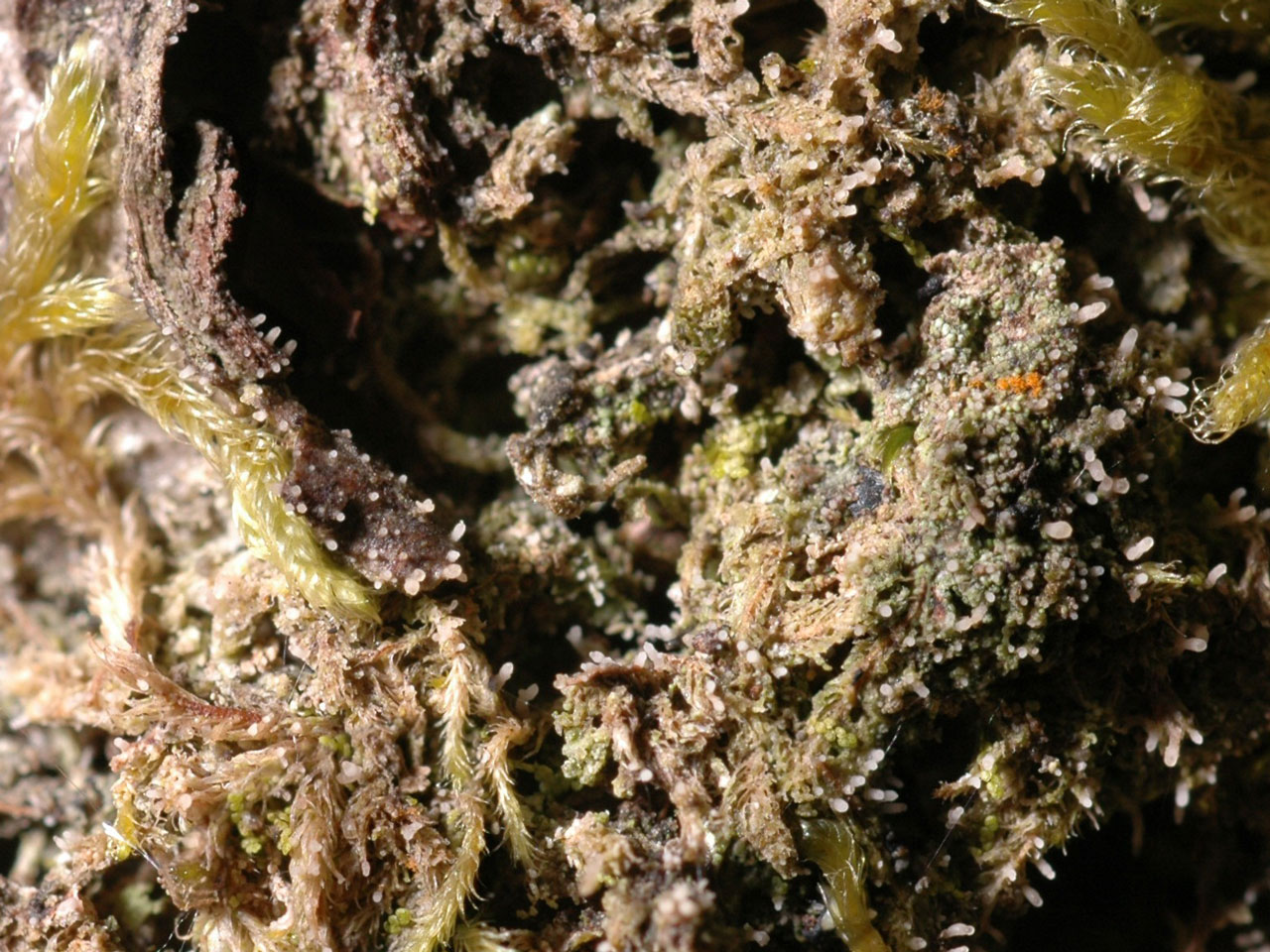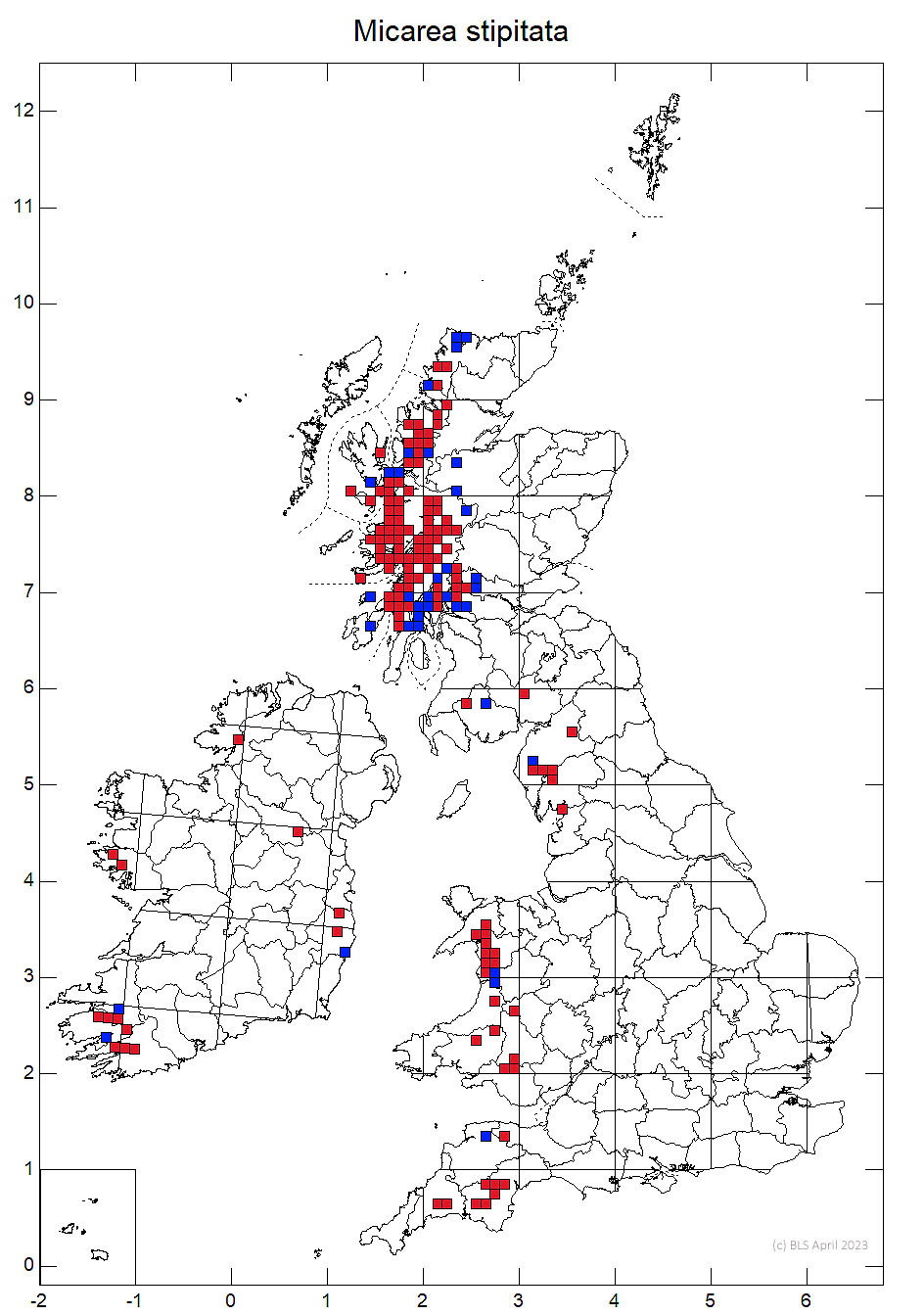Micarea stipitata
The bulk of the known world population is found in the temperate rainforests of the western Highlands and inner Hebrides where it is abundant on leached bark in very wet woodlands. Similar to southern oceanic Micarea pycnidiophora, but without C+ red reactions, and with paler and forked pycnidia and with longer conidia. Rather local to thye south where it tends to be local and found most often in higher “cloud forest” stands and ravines
Thallus dull or grey–green, thin and uneven or with flattened convex areoles 40–100 µm diam.; photobiont cells 4–7 µm diam. Apothecia 0.1–0.3 mm diam., convex to globose or tuberculate, whitish, often absent; true exciple indistinct; hymenium 35–50 µm tall, colourless; hypothecium colourless; paraphyses 1–1.5 µm diam., numerous, branched. Asci 30–35 × 10–12 µm. Ascospores (14–) 21–34 × 2–2.5 (–3) µm, short–acicular, 3– to 7–septate. Pycnidia numerous, whitish, on simple or branched stalks, 0.4–0.8 mm tall and 60–100 µm diam.; conidia 6–8 × 1–1.8 µm, bacilliform to ellipsoidal. All parts C–, K–, Pd– (no lichen products detected by TLC).
Similar to Micarea pycnidiophora, but without C+ red reactions, paler and forked pycnidia and with longer conidia. Biatora veteranorum also has white, stalked pycnidia, but its conidia are smaller (2.5–4 × ca 1 µm) and it grows on the dry bark or wood of ancient trees. Scoliciosporum pruinosum has a granular (K+ dissolving) epithecium and narrower, strongly curved ascospores and UV+ white apothecia.
On leached bark, especially Birch and Oak, often over bryophytes, rarely on mossy rocks in oceanic woodlands in high rainfall areas. Most characteristic of leached bark in very wet temperate rainforest, especially in the western Highlands and inner Hebrides where it is abundant. Further south it tends to be local and found most often in higher “cloud forest” stands and ravines and is rare in low lying woods.

Locally frequent. W. Britain and Ireland in wet areas.
The bulk of the known world population is found in the temperate rainforests of the western Highlands and inner Hebrides where it is abundant on leached bark in very wet woodlands. Much more local to the south.
Britain: Notable & International Responsibility species
Cannon, P., Orange, A., Aptroot, A., Sanderson, N., Coppins, B. & Simkin, J. (2022). Lecanorales: Pilocarpaceae, including the genera Aquacidia, Byssoloma, Fellhanera, Fellhaneropsis, Leimonis and Micarea. Revisions of British and Irish Lichens 27: 1-48.
Text by Neil A Sanderson based on Canon et al (2022).

